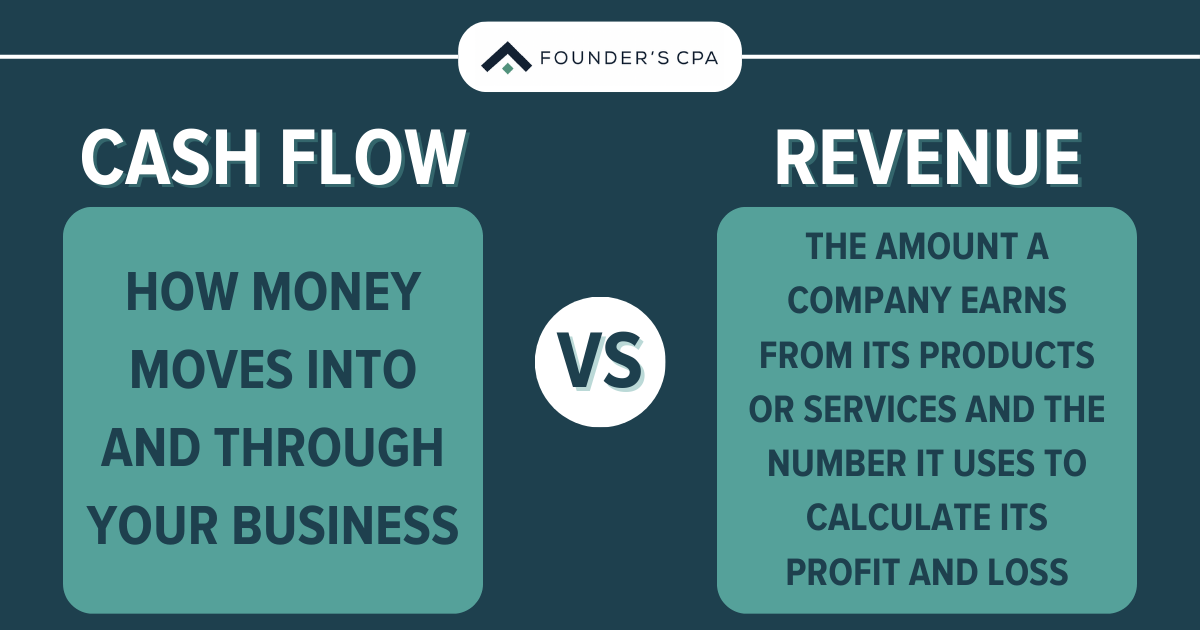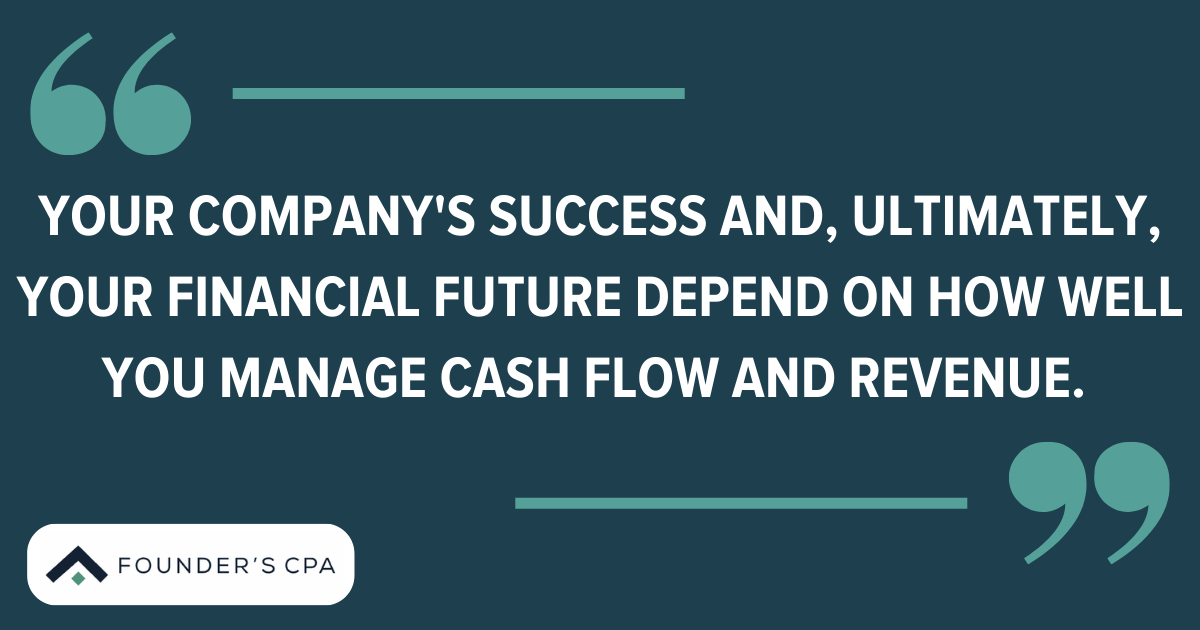Do you find cash flow vs. revenue to be a challenging topic? Although these two essential performance metrics are similar, understanding their differences is crucial for building a healthy business.
Cash flow refers to the total amount of cash moving in and out of a business, while revenue is the amount a company earns from selling its products and services.
Every company needs a source of income to support its operations. Savvy business owners must understand that cash flow differs from revenue and consider how these similar yet diverse concepts impact their company’s performance.

What is Cash Flow?
Understanding cash flow means knowing how money moves into and through your business. It’s the cash or cash equivalents in your accounts and the money you need to cover debts and expenses.
Cash flow statements are important when analyzing the health of your business, and they show where your money is going and indicate whether or not you’re spending wisely or not. This information is most valuable when used to improve your company’s finances and progress toward success.
What is Revenue?
Revenue is the amount a company earns from its products or services and the number it uses to calculate its profit and loss. In other words, revenue is a business’s total money during a given period.
Beginners might confuse revenue with profit, but they are pretty different. Revenue is the income you generate through sales; profit is what you have left over after subtracting costs (manufacturing expenses and salaries).
Revenue is a great metric because it tells you how your business grows. For example, a healthy, growing company might increase revenue by 10% yearly. Whereas if revenue stays flat, there may be problems with your sales strategy or product to address.
Importance of Cash Flow and Revenue
A healthy company requires both revenue and cash flow.
Revenue is essential for measuring a company’s sales performance, while cash flow is crucial for paying wages and bills and investing in growth.
Revenue is linked to a company’s sales but only represents some of the money it receives, and it comes from selling products or services.
Cash flow is the amount of money flowing in and out of business at any time. It’s a crucial financial metric considering incoming and outgoing cash sources, such as sales, investments, outside financing, and debt repayments. Cash flow statements show the total amount of money that has come into the business and how much is going out.
Revenue and cash flow are essential for businesses, and they determine whether a company can:
- Pay its employees
- Remain competitive
- Grow operations over time
Cash Flow vs. Revenue
Cash flow is the amount a company generates during a specific period, after all its costs and expenses. It is critical to business accounting because it helps owners gauge business health, and it differs from revenue, which only tells you how much money came in.
The most confusing aspect of cash flow vs. revenue is that a company can have high revenues and profits but still face cash flow problems if it struggles to collect customer payments in time, or manages its expenses poorly.
For example, a retailer with many customers using credit may need more money to cover operating costs if those customers don’t pay on time or have extended payment terms.
Further, a lack of liquidity (cash) means it cannot invest in new products or services or pay its employees.
Timing
Revenue is recognized when a business makes a sale and earned when the customer takes possession of the product or service. However, cash can flow independently of the sale.
For example, positive cash flow may result from a customer prepaying or decreased accounts receivable after the sale. In these cases, revenue will be recognized when the items are finally sold or settled with customers.
Non-Cash Items
Non-cash revenue items are income items that don’t involve an actual exchange of funds. The company often records these items as expenses when they occur.
These include depreciation and amortization, especially common for SaaS businesses or sectors with customer-paid upfront development costs. Other non-cash revenue items include barter arrangements, customer discounts, recognition for services provided, or credits for services received. These transactions are recorded as revenue but do not affect the company’s cash flow.
Managing Revenue and Cash Flow
Managing revenue and cash flow are two of the most critical aspects of building a business.
Here are some practical tips on how to manage them:
1. Closely manage accounts receivable and accounts payable
Manage your cash flow to ensure that what’s coming in as cash matches what you’re paying suppliers.
2. Optimize inventory levels
More stock on hand creates risks of obsolete products and can tie up your capital and decrease cash flow. The best way to manage inventory is by analyzing your sales data for patterns that indicate when items are selling well or not selling at all and adjusting stock levels accordingly.
3. Invest in new technology
As technology evolves at an unprecedented rate, investing in new technology can improve productivity while decreasing costs associated with manual processes like invoicing and collecting customer payments.

Maximize Cash Flow and Revenue with the Help of an Experienced Accounting Partner
Your company’s success and, ultimately, your financial future depend on how well you manage cash flow and revenue.
Understanding that revenue is different from cash flow is an excellent first step. Liquidity requires getting both right and ensuring that you are maximizing revenue and collecting sufficient cash from your customers to meet upcoming obligations.
Expert help can be a powerful lever for maximizing cash flow and revenue. The experienced accounting partners at Founders CPA can help early-stage startups manage their cash flow better and maximize their revenue generation. contact us today to get started.




